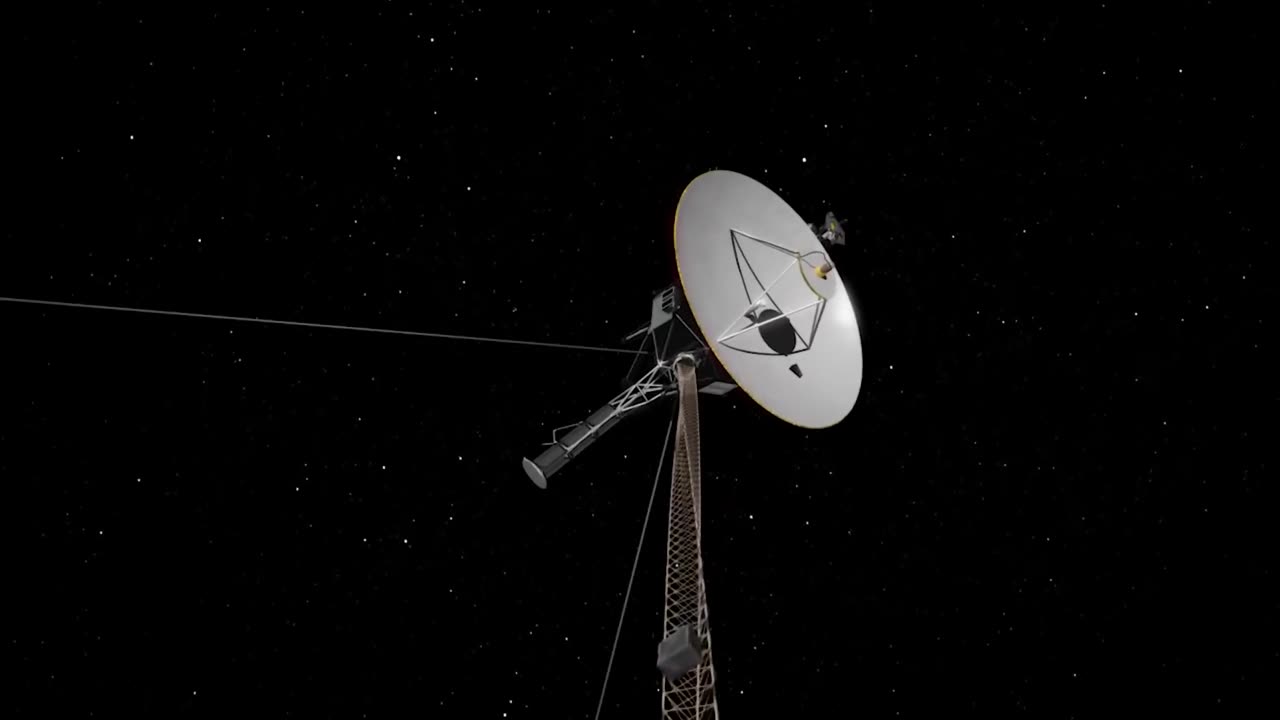Premium Only Content

How far can Voyager 1 go before we lose contact
Voyager 1, launched in 1977, is the farthest human-made object from Earth, traveling through interstellar space. The spacecraft continues to send back data, but how far it can maintain contact depends on several factors, including power supply, signal strength, and the capabilities of Earth-based tracking systems.
### Current Status and Communication Limitations
1. **Distance and Signal Strength**:
- As of now, Voyager 1 is about **24 billion kilometers** (around **161 AU**) from Earth.
- Its weak signal, traveling at the speed of light, takes over 22 hours to reach Earth.
2. **Power Supply**:
- Voyager 1 is powered by a **Radioisotope Thermoelectric Generator (RTG)**, which loses power at about 4 watts per year due to the decay of its plutonium fuel.
- It is expected to have enough power to operate some instruments and maintain communication until around **2030–2035**, at which point its systems will likely shut down.
3. **Tracking Capability**:
- NASA's **Deep Space Network (DSN)**, equipped with highly sensitive antennas, enables communication. However, as Voyager 1 gets farther, its signal will become too faint to detect, even with the DSN.
### Theoretical Maximum Distance
- If power were not a limiting factor, Voyager 1 could theoretically continue traveling indefinitely, reaching distances where communication would fail simply because the signal would become undetectable against cosmic noise.
- Practical communication limits are estimated at around **1.6–2 light-years**, far less than its projected journey toward stars like Proxima Centauri, which is 4.2 light-years away.
Once contact is lost, Voyager 1 will continue its journey through interstellar space, carrying its **Golden Record**, a time capsule of Earth's culture and life, for any potential extraterrestrial discoverers in the distant future.
-
 UPCOMING
UPCOMING
Josh Pate's College Football Show
35 minutes agoSEC Program Rankings | Next Elite Program | CFB Ratings vs NFL Ratings | 2025 Breakout QBs
4 -
 53:28
53:28
Candace Show Podcast
7 hours agoBecoming Brigitte: Jean-Michel Trogneux | Ep 4
101K53 -
 LIVE
LIVE
Edge of Wonder
4 hours agoRigging the Game: Super Bowl Controversy & Fake Alien Invasion Commercial
351 watching -
 11:37
11:37
Tundra Tactical
2 hours agoHeroes in Texas Stop DEADLY School Shooting!
4.05K2 -
 41:45
41:45
Chrissy Clark
1 hour agoFEMA’s Corruption EXPOSED, Trump Assassination Update, & The Rebrand Reveal I Underreported Stories
4.94K1 -
 LIVE
LIVE
The Big Mig™
3 hours agoCelebrate American Exceptionalism 2025 w/ Mary Flynn O’Neill
3,166 watching -
 1:23:59
1:23:59
Redacted News
4 hours agoBREAKING! CORRUPT FBI CAUGHT HELPING ILLEGALS AVOID ICE ARRESTS, HOMAN READY TO PROSECUTE | Redacted
125K152 -
 1:18:39
1:18:39
Awaken With JP
1 day agoThe Latest in the Resurrection of America - LIES Ep 78
102K33 -
 1:55:58
1:55:58
Revenge of the Cis
5 hours agoEpisode 1445: Too Much Breakfast Club
36.7K3 -
 1:17:58
1:17:58
Game On!
5 hours ago $1.05 earnedPUMP THE BRAKES! It's college basketball season now!
35.3K1